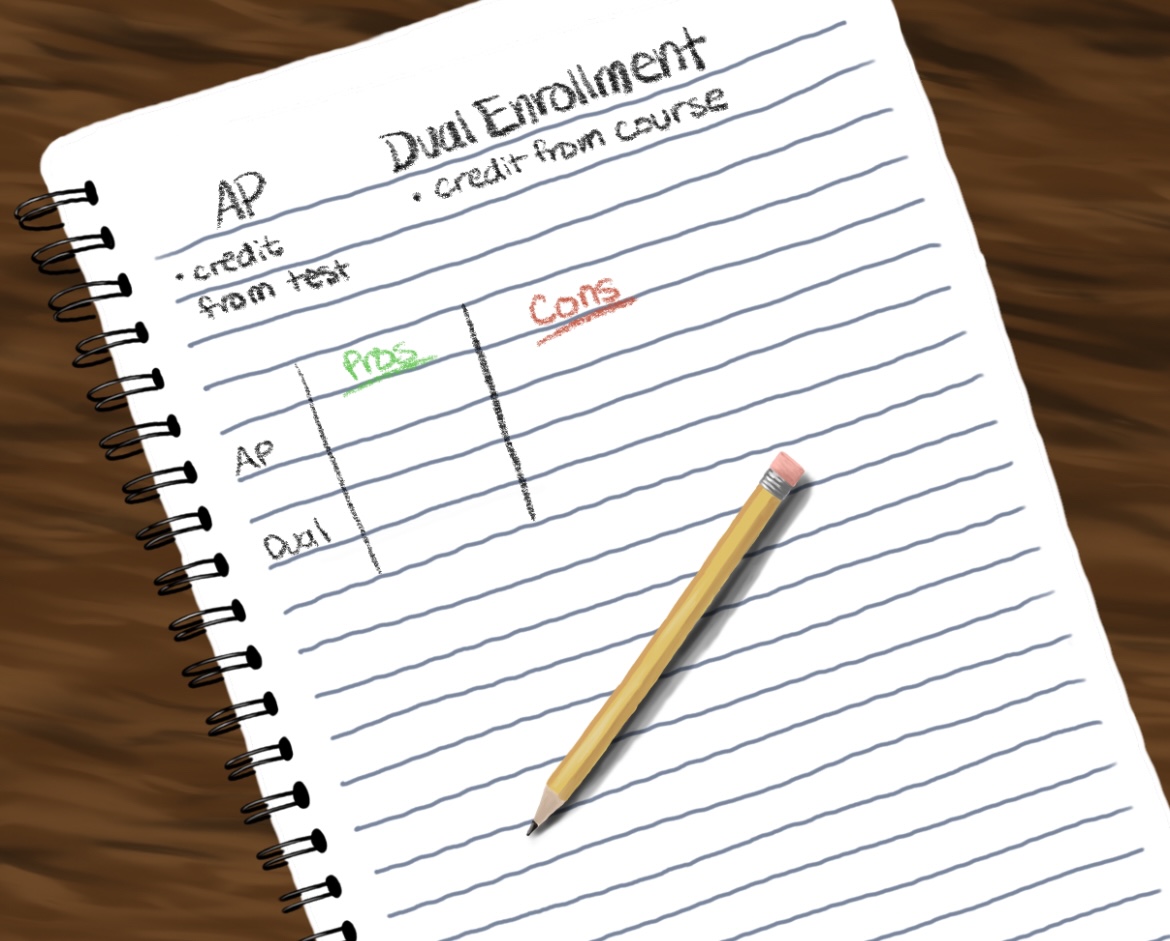As students advance through their four years at LHS, course selection expands from offering only honors and Regents-level classes to courses that potentially offer college credit. These courses are more challenging than regular high school-level courses and give students a chance to get a head start on earning college credits. These courses could be either Advanced Placement (AP) or dual enrollment, two very different ways of learning. Due to the level of work, amount of college credit awarded, and overall style of the class varying, taking which type of course really depends on a student’s preferences.
To begin, it is important to note that both types of classes have the potential to provide a student with college credit. In AP-level courses, the AP exam is taken in May and graded on a scale of 1-5. To earn college credit for these courses, students must earn a three or above on the exam, yet more prestigious universities may only accept a score of four or five.
The College Board claims that “many” U.S. colleges grant credit for scores of three or above. However, this depends on the policy of each specific college, so earning a three does not necessarily guarantee credit. In the case of highly competitive universities, such as Harvard, just earning a single five, the highest score possible on an exam, will not cut it. In fact, in the article “How Many AP Classes Should I Take For Harvard in 2022” on the SoFlo Tutors website (soflotutors.com), “To qualify, students must earn a 5 on a minimum of 4 AP tests, transferring a total of 32 credits.” When considering the amount of at-home work that AP classes require, this could seem like a daunting requirement and may make AP not worth it to some.
However, if the idea of taking APs resonates with a student, it could also be a great learning opportunity. English Teacher Jill Garfunkel said, “The courses are also structured where part of the role of the student is to struggle and wrestle with the academic challenges, learn how to embrace the struggles, and come out successful once the struggles are complete.” This experience could aid students in becoming “a more independent learner,” Garfunkel continued.
Dual enrollment classes contrast AP courses in that sense. In order to receive college credit for dual enrollment, students must simply pass their class. Additionally, according to the article “AP vs. Dual Enrollment: The Pros & Cons of Each Program” on Research.com’s website (research.com), dual enrollment classes “in general, are not as rigorous as AP classes.” This means that students in dual enrollment classes will feel less stressed from a heavy workload in class while still earning college-level credits. “You are almost guaranteed to receive three credits at the end of the year, [while] in an AP course, receiving three credits is contingent on scoring well on the AP exam,” social studies teacher John Cornicello expressed.
Another benefit to dual enrollment, as mentioned in the article “The Power of Dual Enrollment: The Equitable Expansion of College Access and Success” on the U.S. Department of Education website (ED.gov), is that postsecondary outcomes are improved. A study done in North Carolina showed that students who enrolled in dual enrollment classes were more likely to graduate from high school and enroll in college. Even though AP students are more likely to graduate from college, as claimed by the College Board’s website (collegeboard.org), they must complete far more work to succeed. Therefore, for those not as interested in devoting that much time out of class, dual enrollment may be a better option.
Additionally, the structure in which the curriculum is taught differs between AP and dual enrollment. This is because in AP classes, teachers are educating specifically in preparation for the test, meaning they have an exact curriculum to follow to best prepare their students for the exam in May. In dual enrollment courses, however, teachers may have a bit more freedom to explore various topics. This is great for students who might not want to feel the stress of learning information just catered to one exam. “If, for example, a group is interested in a subject that may not be featured, we have the chance to pivot and dive into that subject,” Cornicello added. In an article titled “AP vs. Dual Enrollment: Which Is Better?” as posted on CollegeVine’s website (collegevine.com), it was determined that dual enrollment classes offer a college-type feel without the stress of an AP.
Ultimately, the choice of which type of class is better for a student depends on his/her preferences. If a student wishes to stand out more in the college application process or challenge him/herself with more complex schoolwork, AP classes may be the better choice. However, if more rigorous homework and self-study are not what one feels comfortable with, then dual enrollment may be a great option.





































